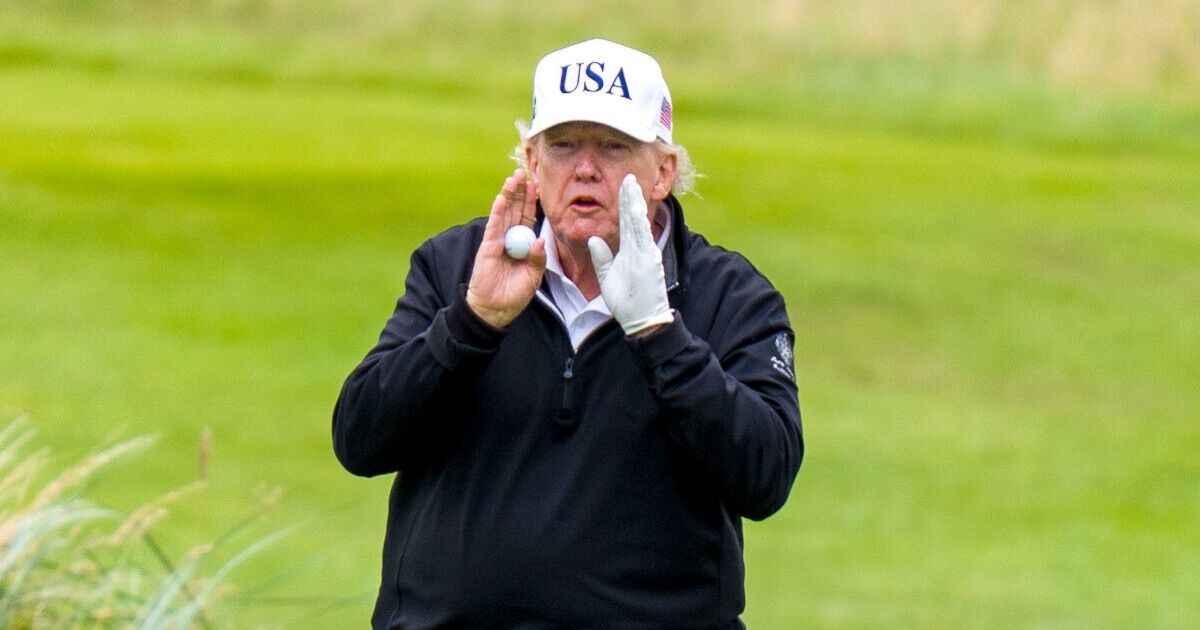Donald Trump might have told his caddy to make his golf great again when it appeared the president was given a helping hand when his ball got into a tricky situation. Footage of Trump playing a round of golf at his Turnberry course this weekend appeared to capture the moment a caddy dropped a fresh ball in a better position so his boss could take a shot.
Trump is on a five-day visit to Scotland, expected to end on Tuesday, during which he will meet Sir Keir Starmer today (Monday), having announced a trade deal with the EU’s Commissioner Ursula von der Leyen on Sunday. The American leader has also managed to cram in two days playing 18 holes of golf at his Turnberry resort in Ayrshire.
But in one suspicious video clip widely shared online, the 79-year-old can be seen approaching a hole in his golf buggy as two caddies wearing red vests walk ahead of him. Then just as one caddy walks close to a bunker he can be seen dropping a golf ball from his pocket onto the fairway.
Trump then disembarks from his golf buggy and squares up to play the ball dropped by his staff before cheekily giving a wave to the camera.
The President’s official of handicap is said to be 2.8, which the White House claims is the lowest handicap of any US president in history. Sporting publication Golf Digest have dubbed Trump “golfer-in-chief” for his love of the game.
Reacting to the hilarious video online, one person wrote on X: “Caddy did that so smoothly. Can only imagine how many times he’s done it.”
“I want to know how he finds caddies to do that for him,” added another.
Prime Minister Sir Keir Starmer is meeting Trump at his Turnberry golf property. The two men are likely to discuss everything from trade tariffs, to the situation in Israel and Gaza.
However, there is unlikely to be a “resolution” in talks over US tariffs on UK steel Business Secretary Jonathan Reynolds indicated, saying there was “more to do” in negotiations.
When the UK and US signed a trade deal in June, it reduced tariffs on car and aerospace imports to the US. But agreement on a similar arrangement for Britain’s steel imports was not reached, leaving tariffs on steel at 25%.
American concerns over steel products made elsewhere in the world, then finished in the UK, are said to be among the sticking points.

